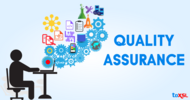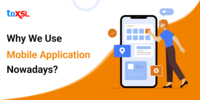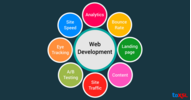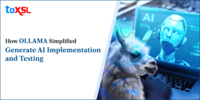- Jul 14, 2025
Share this post on:
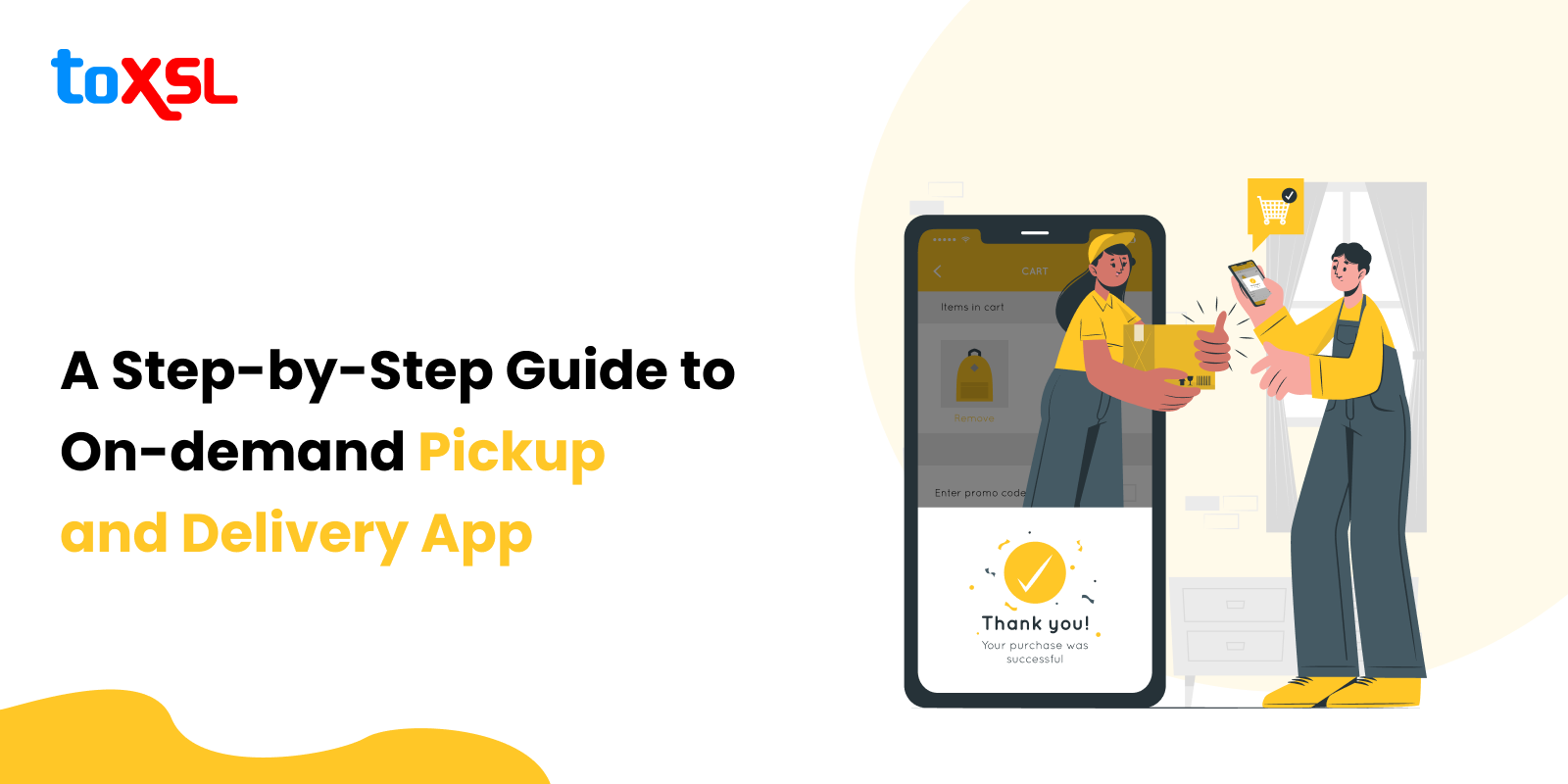
It is no longer an obligation but has become a necessity to stand strong in the tech enthusiast world. People are seeking opportunities to create an online presence, therefore on-demand solutions become the clear striker and the latest trend in the tech industry. The apps connect seekers with providers to swiftly deliver goods and services while making life easier.
Whether it is a food delivery application, salon or pharmacy the on-demand apps are trending. This is not only making the life of people’s easier but also allowing the businesses to try their hands-on development of such apps. Here is the blog for all the young entrepreneurs who want to launch their on-demand pickup and delivery app.
What is a pickup and delivery app?
As the name says it all, the pickup and delivery app performs the tasks that offer products/ services to be done. Whether it is food, medicine, or any other service it covers all the major industries. On-demand pick-up and delivery apps are booming continuously, if you have still not given it a thought of getting an app developed, it is the ideal time. Reap the benefits and offer seamless services to all your customers.
On-demand Delivery Apps- Current Market and Trends
The on-demand economy has grown at an unexpected rate, and these applications have a huge impact on the businesses that disrupt the traditional businesses. On-demand delivery apps have revolutionized the way people avail services and transact daily.
As of 2014, the on-demand industry generated a revenue of $14B, but the number increases and is expected to reach $335 Billion by the end of 2025. It is high time to invest in such applications as pickup and drop because people fear to move out of their houses. Customers prefer delivery of goods and services at their doorstep whether it is food, grocery, medicine, courier, and more.
Types of On-demand Pickup and Delivery Apps
The on-demand service application is developed on these three business models.
1. Business to Business Pickup and Delivery (B2B)
On-demand business-to-business apps are developed that connect one business to another business. This means when both the buyer and seller are companies and the delivery and services offered to them are included in the B2B category.
B2B apps can be further divided into:
Vertical: It refers to serve a single industry or sector.
Horizontal: It refers to serve multiple industries and sectors.
2. Business to Consumer Pickup and Delivery (B2C)
Here the service provider is a company and the requester is the individual. For example, if you want to order a burger from Burger King, the delivery would be done by a company and the receiver is an individual.
3. Customer to Customer Pickup and Delivery (C2C)
Consider the example of a conventional courier service, put it on a mobile app, and you have here got P2P pickup and delivery services. Courier app is a perfect example of such services.
Whatever the business model is, the sole purpose of the pickup and delivery app is to pick up goods/services from point A and deliver them to point B. It can be booked as per the location and availability. The concerned agent picks up the item and delivers it to their destination.
Which businesses need on-demand delivery apps for faster growth and development?
In today’s fast-paced digital economy, convenience is king. Customers expect goods and services to arrive at their doorstep — quickly, efficiently, and often, instantly. This rising demand has made on-demand delivery apps a game-changer for businesses across industries. But which types of businesses benefit most from investing in these platforms? Let’s explore.
1. Food & Beverage Industry
Restaurants, cloud kitchens, and cafes are at the forefront of the on-demand revolution. With consumers expecting meals delivered hot and fresh within 30 minutes, delivery apps are crucial for:
- Reaching wider audiences beyond dine-in
- Manging orders efficiently
- Competing with third-party platforms (like Uber Eats or DoorDash)
2. Grocery and Essentials Stores
Grocery delivery surged during the pandemic and has remained popular. Local stores and supermarket chains can boost loyalty and repeat orders by offering:
- Real-time inventory updates
- Scheduled or express delivery
- Contactless payment options
3. Pharmacies and Healthcare Services
Timely delivery of medicines and healthcare products can be life-saving. On-demand apps allow pharmacies to:
- Offer same-day delivery of prescriptions
- Provide digital consultations and follow-up medication delivery
- Serve elderly or remote patients more efficiently
4. Retail & E-commerce
With giants like Amazon setting the bar high, even small and mid-sized retailers need to offer fast delivery to stay competitive. Custom delivery apps help:
- Improve brand identity
- Track orders in real time
- Provide personalized customer experiences
5. Courier and Logistics Services
Delivery-focused businesses benefit from streamlined operations through apps that enable:
- Dynamic routing and driver tracking
- Instant booking and payment options
- Real-time status updates for customers
6. Home Services and Repairs
Plumbers, electricians, cleaners, and technicians can use on-demand platforms to:
- Let customers book services instantly
- Manage schedules and availability
- Communicate directly with clients via the app
7. Florists and Gift Shops
Time-sensitive deliveries like flowers and gifts need efficient last-mile logistics. On-demand apps allow:
- Timely delivery for special occasions
- Same-day gift customization and delivery
- Order tracking for peace of mind
Benefits of On-demand Pickup and Delivery App?
In today’s fast-paced digital world, businesses are constantly looking for ways to offer more convenience to their customers while improving internal efficiency. One of the most effective solutions is the use of an on-demand pickup and delivery app. These platforms allow businesses to automate and streamline the entire logistics process, making it easier to handle orders, dispatch drivers, track deliveries, and communicate with customers — all in real time.
By integrating such an app into your operations, you can significantly reduce delivery times through intelligent route optimization and instant job assignment. This not only helps cut down on fuel costs and labor hours but also ensures a faster, more reliable service for your customers. The ability for users to place orders at any time, track them in real-time, and receive notifications throughout the process greatly enhances the customer experience, building trust and satisfaction that drives repeat business.
Another major advantage of an on-demand delivery app is the level of control and insight it gives to business owners. With access to detailed analytics, you can monitor performance metrics, understand customer behavior, and make data-driven decisions to further refine your logistics strategy. The app also helps prevent common issues like delivery errors or disputes by offering features like digital signatures, photo confirmation, and proof of delivery.
From a growth perspective, an on-demand platform allows your business to scale operations smoothly. As demand increases, the app supports expansion into new regions, manages higher order volumes, and adapts to new service categories without needing a complete operational overhaul. Moreover, a custom-branded app enhances your market presence and helps you stand out from competitors who rely solely on third-party services.
Ultimately, an on-demand pickup and delivery app is not just a convenience — it’s a strategic tool for driving efficiency, improving customer relationships, and setting your business up for sustainable growth in a highly competitive market.
Core Features for your on-demand Pickup and Delivery App
Features for Customers
1. Registration
The app should offer easy registration with the social media login or by simply entering the email and password so that the user can manage their account easily. The user can also register with the phone number as it offers an easy option.
2. Real-time GPS tracking
An on-demand pickup and delivery app should offer real-time tracking for the users. When a user places their order the inbuilt tracking option allows them to track the status of their order.
3. Payment gateway integration
This is the most crucial feature to integrate into the application as most of the users now prefer online payment via secure payment gateways. The app should offer multiple payment options that include COD, net banking, Credit/debit card, and more.
4. Reviews and ratings
The review and rating is the feedback that the service provider gets so that they can improve their services. Here the user can share their experience and feedback while helping them to make improvements.
5. Order placement
Once the users select the products/services, they will have to place the order.
6. In-app call/messaging
The app should offer in-built chat and call support so that the users can get in touch with the service provider immediately.
Features for Drivers
Accept and reject the request
The drivers are the most vital resource of a delivery app as they act as a bridge between the seller and consumer. They can accept or reject the request within a given period.
Availability
The service providers can choose their availability as per their time.
Earning tracker
The feature helps to track the earning of the driver and plan their day accordingly.
Features of Admin
1. User management
The admin should be able to manage all the activities of customers like payment and query.
2. Manage driver’s Record
It is the admin’s job to maintain the driver’s incentives, earnings, penalties, and promotions.
3. Real-time analytics
This feature allows the admin to view the insights in real-time. Also, it lets you know the areas that require improvements.
Cost Of Pickup and Delivery App Development
The cost of developing a pickup and delivery app can vary significantly based on several factors, including the complexity of features, technology stack, development team location, and whether you're building the app from scratch or using a white-label solution. On average, a basic pickup and delivery app with standard features like user registration, order placement, real-time tracking, notifications, and payment integration can range from $5,000 to $12,000 when developed by a mid-tier agency or freelance team.
However, if you're looking to build a more advanced and scalable solution with additional features such as route optimization, live driver tracking, admin dashboards, analytics, API integrations, in-app chat, loyalty programs, and custom branding, the cost can rise to $10,000 to $25,000 or more. For enterprise-level apps that support multiple user roles, real-time logistics intelligence, multiple platforms (iOS, Android, Web), and backend automation, the development costs may exceed $100,000 depending on the scale and performance expectations.
Other factors that influence the total cost include UI/UX design complexity, third-party services (like payment gateways, map services, or SMS APIs), cloud infrastructure, and ongoing maintenance or updates post-launch. If you're working with an offshore development team, you might reduce costs without compromising on quality, while hiring a local or in-house team could increase expenses due to higher hourly rates.
It’s also worth considering the long-term value. A well-built on-demand delivery app can improve operational efficiency, reduce third-party commission costs, and open up new revenue streams, making it a smart investment for businesses aiming to scale quickly and improve customer satisfaction.
Summing Up
After going through the entire process you might assume about having an on-demand pickup and delivery application of your own. Regardless of your business model, an on-demand app can help you engage customers in a better way, retain them and increase your business revenue.
And to start with it, a professional team must be hired that has the passion for technology, skills, and the right expertise. If you would like to develop an on-demand pickup and drop application with ToXSL, check on the features and functionalities we offer along with our portfolio. You can also contact us here!



